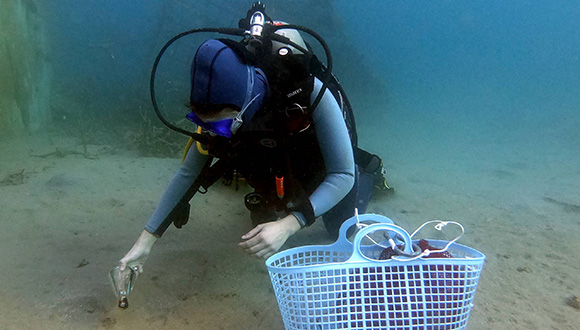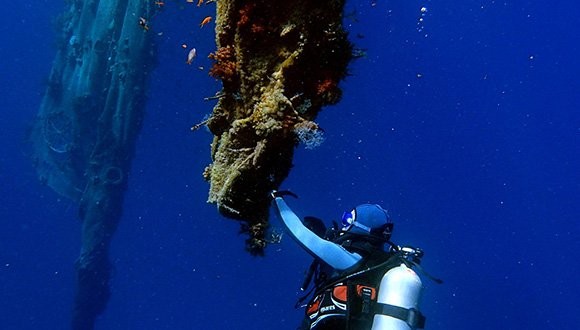What it’s like to be a Ph.D. student
So, what does life as a zoology Ph.D. student look like?
Gal Vered, a research student studying the effect sof plastic waste on coral reefs, and focusing on the coral reef in the Gulf of Eilat as a test case, talks about her dream of becoming a marine biologist.
A few words about Gal
Gal Vered is a Ph.D. student who is researching the effects of plastic waste on coral reefs, and focuses on the coral reef in the Gulf of Eilat as a test case. Her research, under the supervision of Prof. Noa Shenkar, is carried out at the Interuniversity Institute for Marine Sciences in Eilat.
Gal holds a B.Sc. in marine biotechnology and an M.Sc. in ecology and the environment from Tel Aviv University. In parallel to her studies she is active in making science accessible to the public, and employs citizen science for education and environmental monitoring.
What’s it like being a doctoral student with us?
I started out at Tel Aviv University as an M.Sc. research student four years ago. When my mailbox began to fill up with headlines such as: “We could be happy to receive enrichment games for baby bats”, “Registration for a field workshop on the Asian elephant in Thailand”, “A request for reports on the little fire ant in Israel”; I understood that being part of the School of Zoology is in fact being part of a fascinating international community of researchers, and one that enables exposure to an infinite variety of research methods and fields.
A few words about the research
When I was dreaming about becoming a marine biologist, I imagined that that I would study marine animals. I never for a moment thought that in the end I would be researching waste. Sadly, our reality has left us with no choice. Every year over 20 million tons of plastic waster find their way into the marine environment. The large plastic particles and plastic products come into contact with the marine creatures and choke and physically injure them.
The animals that swallow this plastic are in danger of intestinal blockage and starvation. A survey carried out at 150 coral reefs in Asia and Australia found that the reefs that come into contact with plastic waste have a ca. 90% chance of developing a coral disease, in comparison with 4% for corals that do not encounter plastic pollution.
In addition to the large plastic particles, there are also microplastic particles (less than 5 mm in diameter, and found in every drop of water, at the polar regions, at remote islands and on the ocean floor), that are eaten or engulfed by tiny marine animals called plankton, which form the very basis of the marine food chain.
Studies have shown that the presence of microplastic in different animals reduces their food consumption rate and that these tiny particles can stray from the stomach into the tissues and cause inflammation.
Moreover, both the large plastic particles and the microplastic present a potential source of different chemicals that are added to the plastic during its manufacture. Many of these chemicals are known as hormone interrupters and impact fertility, reproduction and development in a variety of animals. Many of them are therefore banned from use in baby products and toys for these very reasons.
In my research I investigate the effects and extent of the plastic pollution that reaches the tropical coral reefs, and focus on the Gulf of Eilat as a test case. Examination of the large plastic waste particles, microplastics and various plastic additives is leading to a broader understanding of the problem, while also seeking to determine the meeting point between the causes of pollution and the creatures that dwell on the reef.
I believe that a better understanding of the way in which different animals are exposed to plastic pollution and affected by it will lead to a greater accuracy and efficiency in the efforts to protect them and prevent damage and disease; and will lead too to a better conservation of the tropical coral reefs, which indeed constitute a unique marine ecosystem that has no substitute and can never be replaced.

Gal Vered during her research work at the Gulf of Eilat (photo: Tal Gordon).


